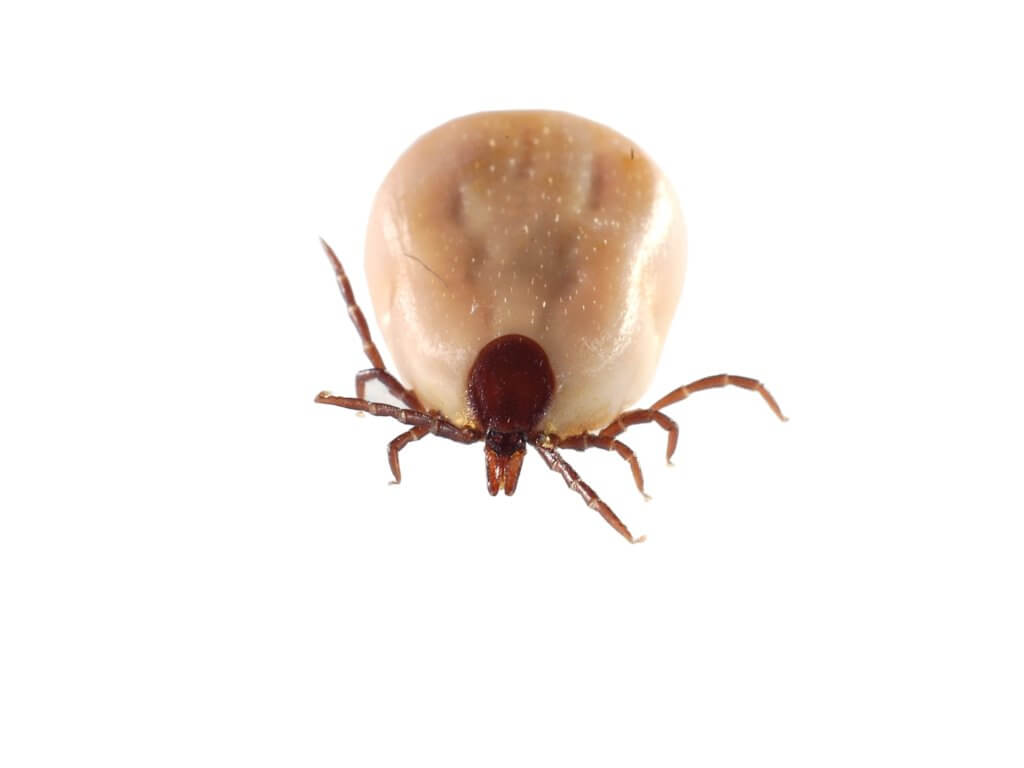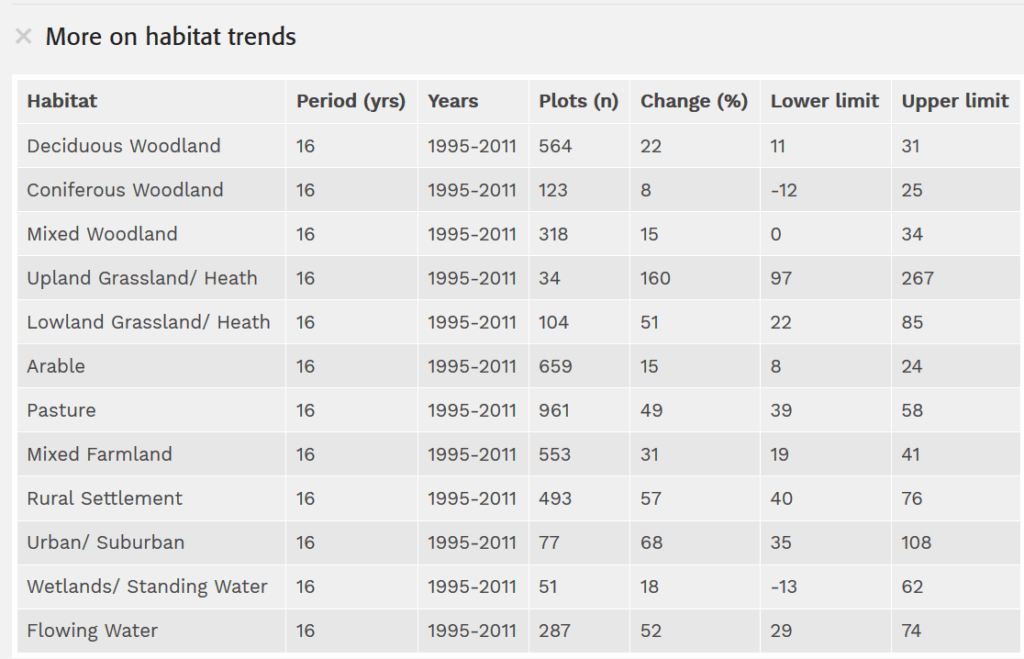
Ticks – even talk of them is enough to make one itch.
Remember that Mountain Hares are killed in enormous numbers, causing massive population declines, on grouse moors largely because they carry ticks. And the ticks carry the virus that leads to louping ill (in sheep and Red Grouse for starters).
So I was interested in a recent paper in Bird Study by David Douglas (RSPB) and James Pearce-Higgins (BTO) which looked at tick burdens of Golden Plover chicks. The take-home message was; more ticks = the lower survival. This was based on a small sample of chicks (though not tiny) and, more importantly I feel, just one site. But it was interesting.
And the authors point out that the tick loads that they observed were much higher than in previously published observations.
So, if you have a weirdly Red Grouse-centric view of the world you might be wondering whether to shoot Golden Plover to reduce the tick burdens on your Red Grouse, I guess. But I suppose that what it really means is that everything that is warm-blooded and roams around in the uplands is likely to have a tick or two attached to it at some stage. The little critters seem to find me easily enough when I visit the uplands. Itching yet?
What else carries this species of tick? Well, that rare bird the Pheasant, whose numbers released into the countryside have increased 9-fold or so over the last 50 years also carries ticks. And we know, or at least we think we know, that Pheasant numbers have increased most strongly in upland areas.

So I guess we ought to be worried about the impact that all those Pheasants have on tick numbers and Red Grouse numbers, and Golden Plover numbers, maybe? Maybe this is another way that Pheasant numbers are affecting the conservation interest of upland SPAs and SACs. It would be good if someone had a look at this properly as Wild Justice has called upon Defra to do.
But the ticks carried by Pheasants, and lots of other species, are also sources of the bacteria which cause Lyme disease. And Pheasant numbers have increased because of those massive increases in numbers of released birds. Lyme disease has apparently got commoner too. Makes you think doesn’t it? And makes me itch too.
Scientists have said ‘pheasants are important in maintaining the transmission of Lyme disease spirochaetes in lowland woods in the UK’ but who were these scientists – perhaps a bunch of extremist antis? Not really, the senior author worked for GWCT. Other scientists wondered ‘whether the increase in the number of released pheasants is exacerbating the spread of Lyme disease‘ and these too, were scientists working for the GWCT.
So, Pheasants carry ticks, Pheasants are increasingly released into the countryside and their spring breeding numbers are also increasing, and especially so in the uplands; the ticks carried by Pheasants can spread a virus to upland bird species including Red Grouse and a bacterium too, including to humans like you and me. Are you itching now?
I’m itching for Defra to carry out a proper evaluation of the release of 50 million non-native gameirds into the countryside and you can help Wild Justice force Defra to do that by supporting this crowdfunder, please.
[registration_form]
Red grouse carry ticks. If you destroy the natural variation in their habitat and increase their density…like on a grouse moor…. then you increase the density of ticks on that moorland.
Its just one of the things that happen when you screw up a natural system… no matter how god like the keepers think they are, nature controls the variables.
Autumn watch last year (or perhaps the year before?) reported how milder winters in Maine were allowing tick numbers to build up to such massive numbers that moose calves were being killed by the enormous tick load they were carrying. I would imagine that in Scotland and the north of England too, cold winter weather is important in suppressing tick numbers. Therefore activities that release carbon from the peat, such as poorly managed muirburn, could well be contributing to increased problems with ticks for all species present on the moorland…
Jonathan – indeed. Deer are thought to be pretty important in all this too.
Deer most certainly carry ticks and non lethal management using dogs can reduce deer densities thus reducing tick densities. If you don’t have a gun or just don’t want to kill the deer the use of dogs is an excellent option.
Ticks are widespread across the UK and particularly numerous in Southern Britain also. I first met these little charmers back in the early 1970’s when involved in deer control in the South East and East Anglia. I was regularly ‘ticked’ and despite being very diligent in their removal ended up with some spectacular reactions. This was before Lyme disease was recognised as being present in the UK and so none of my colleagues took too much notice of reactions too bites, just a spot of iodine and back to work. Now 45 years later, I benefit from the consequences of Lyme, depression, arthritis, muscle tremors and sporadic neuropathy, as do many of my former colleagues. One can only wonder at the effects of heavy tick burdens on small chicks and small passerines. Ironically, later I was involved in collecting ticks for a researcher at the School of Veterinary Medicine in Cambridge, particularly looking for evidence of transmission of viruses of veterinary concern from sub-Saharan Africa by migrant birds. I find it odd that many people who walk their dogs in the country ( even on leads and keeping to footpaths) fail to recognise the myriad of nasty illnesses vectored by ticks. Clearly the misguided attempt to solve the problems on grouse moors by killing Mountain Hares only makes the prospects for grouse and other moorland creatures worse, remove the major vector and more ticks are left looking for a ride on what remains. Interestingly, I read recently that in the southern states of the USA research shows that gardens regularly visited by Opossums carry far fewer ticks than those that are not so blessed. It appears that unlike most mammals, opossums actively groom off the ticks and eat them!! Perhaps we need a few Opossums in the UK, one for DEFRA to ponder?
Norman – thank you for this personal account.
I’m sure my first experience of ticks was as a child, finding a heavily tick infested Hedgehog in the garden. I cannot remember what we did if anything but I was obviously impressed as I can still vividly see those blood swollen “grapes” on that poor hedgehog.
When I worked for RSPB in Bowland ( 1988 I think) I can remember one Merlin pair would not easily give up their nest whereabouts, to solve the problem I sat on the opposite side of a little hanging valley and eventually witnessed a change at the nest thus finding it. However, I discovered the elbow I had rested on had about 15 ticks attached.
I attracted them again in 2013 on Fleetwith above Honister Pass when there to find Mountain Ringlet ( successful) afterwards we sat for lunch on the fell top and I ended up infested again! I don’t appear to have contracted Lyme disease, fortunately for me.
I too remember the Autumnwatch item I think from last year.
I think you will find the cases of Lymes becoming more common due to it being more well known.
Many years ago, I had problems which a few people suggested could be symptoms of Lymes, I went to the doctors who was based in a countryside practice and he had to google the name and then ask the main hospital what tests to carry out!!
This isn’t happening so much these days as doctors have more understanding of Lymes
I guess you’ve seen this publication about Lyme Disease (LD) which concluded
“The incidence of LD is about threefold
higher than previously estimated, and people are at risk
throughout the UK. These results should lead to increased
awareness of the need for preventive measures”
Incidence of Lyme disease in the UK: a population-based cohort study
https://bmjopen.bmj.com/content/bmjopen/9/8/e025916.full.pdf
New paper out today – on rise in lyme disease UK, would be interesting to analyse their regional data by year for any association with game shoot numbers. btw, my daughter began treatment for suspected lyme disease last week, living on Hampshire borders.
https://bmjopen.bmj.com/content/9/8/e025916
more information on distribution here
https://bmjopen.bmj.com/content/9/8/e028064#ref-5
If pheasants are responsible for spreading Lyme Disease-infected ticks surely you would see a disproportionate number of Lyme Disease sufferers amongst those who are regularly around pheasants (game keeepers, beaters, pickers-up etc), is this the case?
One of the posts above highlights how the effects of the condition may not be immediately apparent. Depressions and other symptoms which might be ascribed to other causes. Ever met a negative or off colour gsmekeepers. I suspect there are lots of them suffering from the effects.